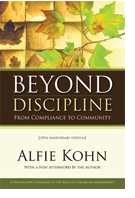This Teaching Tip comes from one of Learners Edge very own – Dr. Nancy Lindfors, Director of Curriculum and Instruction. We hope her teaching advice comes in handy as you start planning for the upcoming school year:
During each of the fourteen years I was a teacher, the lessons I learned were numerous. My tenure included public and private schools, high school and middle school students, and both small and large urban and suburban locations. I constantly edited my lessons, policies, and classroom procedures in an effort to better serve students and to make my life a little less chaotic. I made great strides, but I always considered myself to be a work in progress – even after fourteen years.
Classroom management is one of those things that I never totally perfected….does anyone? I wanted my students to be happy and excited about our science investigations and I always felt disappointed more in myself than anyone else when t issues arose. Let’s face it, classroom management issues can derail us in so many ways:
- extra meetings with principals and parents
- paperwork
- frustration/emotional drain
- reduced desire to do “fun and nontraditional” things in the classroom
Those same issues were also opportunities for me to reflect, learn, and challenge myself.
Every year, every section, every student is just a bit different, so teachers have to be nimble and flexible. To do that effectively we need lots of tools in our toolboxes. If you could have a do over, (and hey – you can in Fall), what are the top three classroom management strategies you would employ that you haven’t in the past?
Here are mine:
- Involve students in creating classroom ground rules. While I’ve done this in the past, this time I might have students work in small groups to reflect on their past learning environments – what worked? What didn’t? The students can then create positive ground rules with a focus on what we do to promote learning. I would also set a time to revisit those rules to make any changes deemed necessary after a month or so.
- Promote students’ sense of ownership by including choice. I’d seek out multiple ways to incorporate more choice in my classroom (rules, activities, working in groups or not, etc). This requires a paradigm shift: a release in control instead of an increase in control. Many years ago I had the pleasure of being involved in a 6 week Problem -Based Learning pilot in our high school. This forced me to relinquish control to learners who then, frankly, exceeded my expectations. Based on that enlightening experience, I learned to trust students.
Keep a reflective weekly journal – I would use journaling to make notes about any issues that arose and what my part in those issues were. What cues did I miss? Are my expectations realistic? Do the behaviors I expect really promote learning? What are the most natural and appropriate consequences? What would I do differently in a similar scenario given my reflection? How can I use this journaling strategy to leverage (or create) a learning community and the support and expertise of my principal and peers?
Share your teaching tips!
Want to learn more? Learners Edge offers several courses to help you establish your classroom management and instructional strategies. Check out our courses below!

 Keep a reflective weekly journal – I would use journaling to make notes about any issues that arose and what my part in those issues were. What cues did I miss? Are my expectations realistic? Do the behaviors I expect really promote learning? What are the most natural and appropriate consequences? What would I do differently in a similar scenario given my reflection? How can I use this journaling strategy to leverage (or create) a learning community and the support and expertise of my principal and peers?
Keep a reflective weekly journal – I would use journaling to make notes about any issues that arose and what my part in those issues were. What cues did I miss? Are my expectations realistic? Do the behaviors I expect really promote learning? What are the most natural and appropriate consequences? What would I do differently in a similar scenario given my reflection? How can I use this journaling strategy to leverage (or create) a learning community and the support and expertise of my principal and peers?




